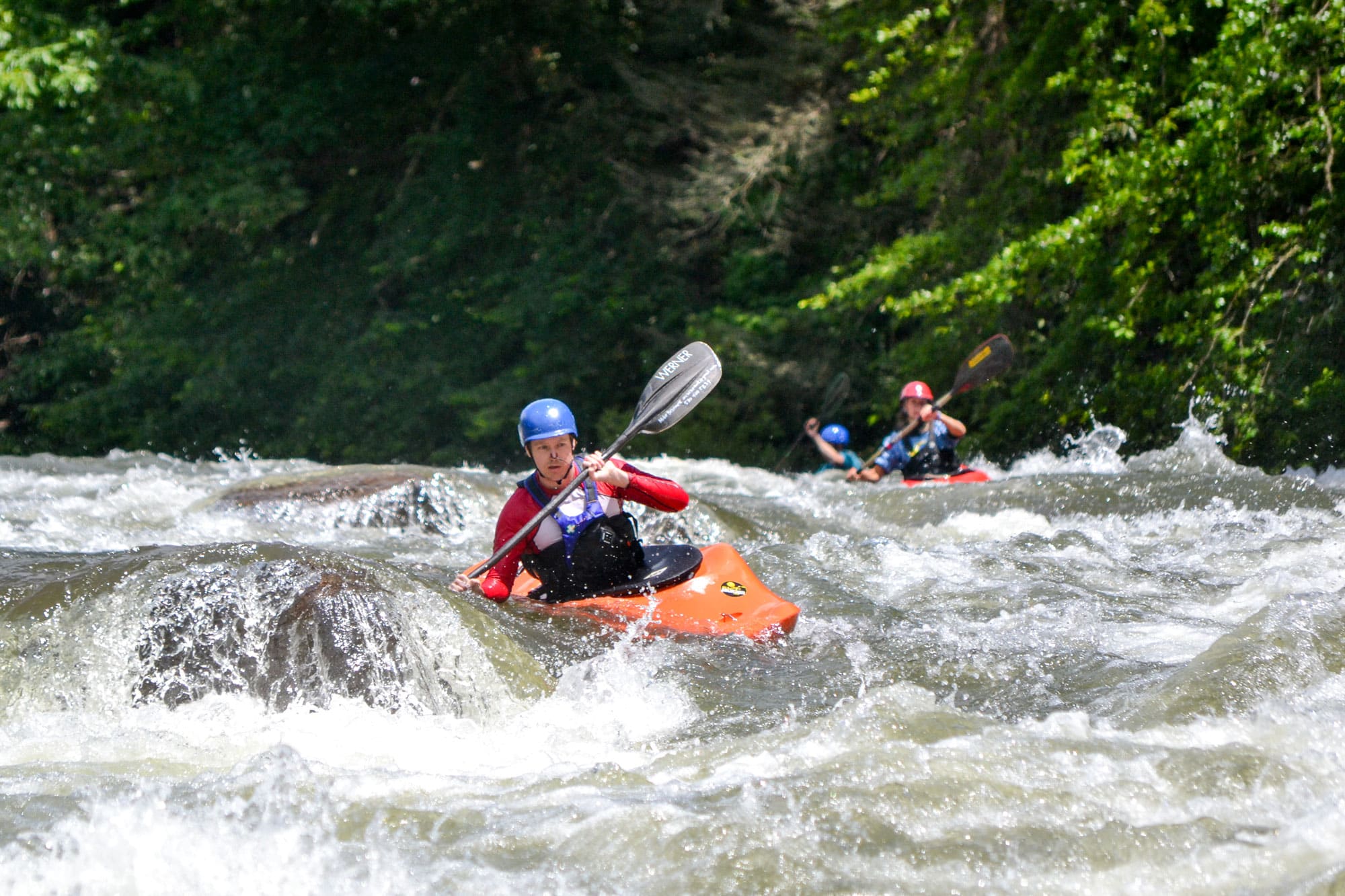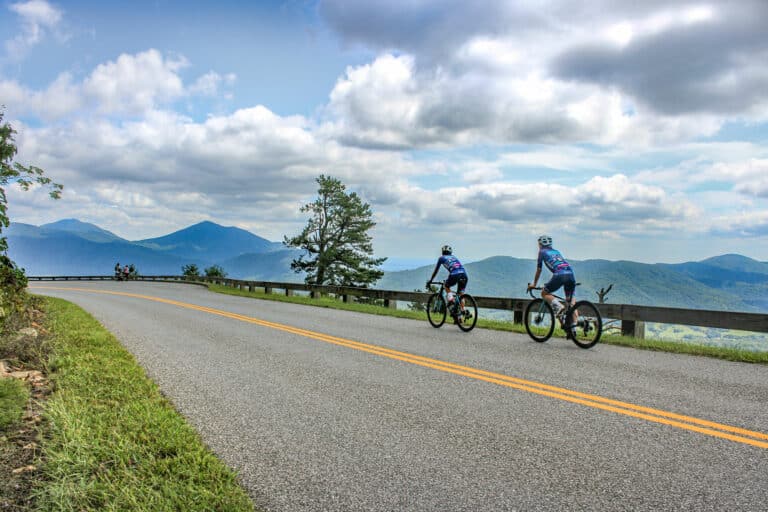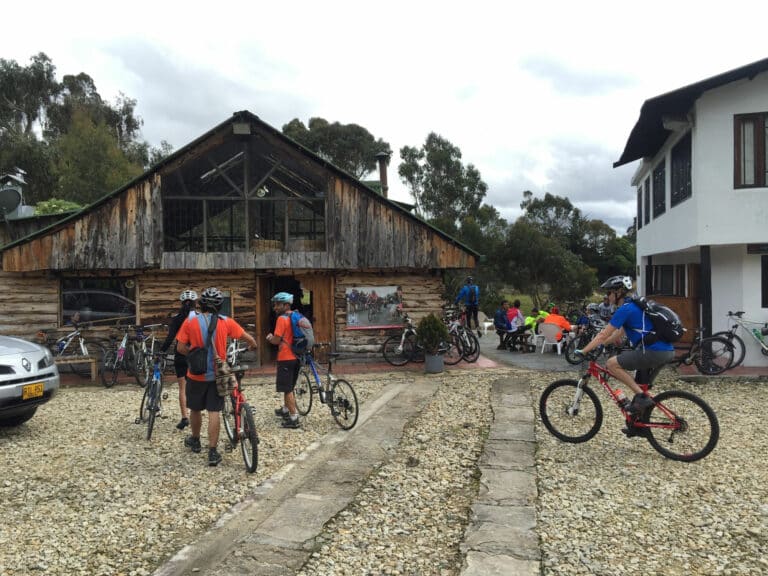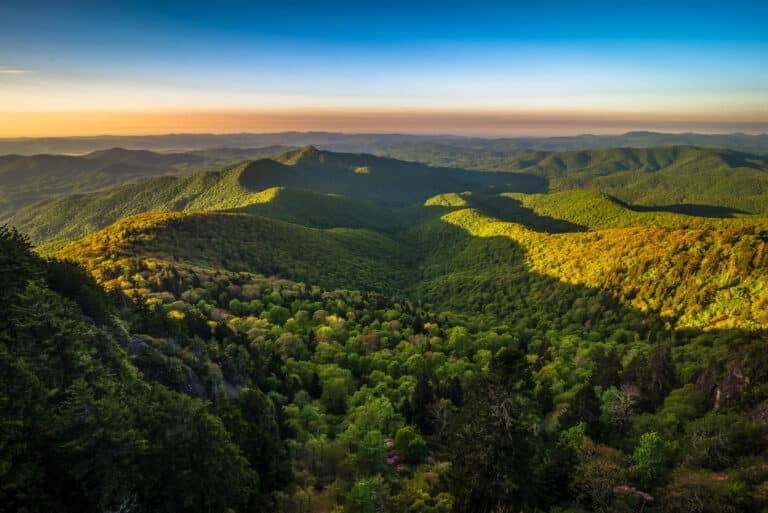Quit Watching from Shore—It’s Time to Get Wet
It happens every summer at whitewater rivers across the Southeast. A group of rowdy kayakers passes through. They’re laughing. Waving. Playfully splashing water with their blades. One flips over to cool off. While upside down, they orient their paddle near the surface. In a sudden and bewildering movement, they roll back up, dripping wet and grinning like a kid.
These people are paddlers. A unique species of motivated misfits who are more comfortable in boats than a company meeting, where they might sit around awkwardly while dreaming about the next trip.
And each sunny day, while paddlers are navigating churning rapids and floating tree-lined rivers, curious observers gather and watch with a variety of reactions, including concern, skepticism, and exhilaration. A guest in a guided raft might ogle athletic kayakers nimbly zigzagging between waves before launching off a rock into the air. Or friends in an idling vehicle will stare at a pair of synced-up paddle-cat rafters, dipping their single-blades into froth and putting those pontoons in spots that seem impossible.
How do I get into that, some observers wonder. How do I become a paddler?
Two Paths to Paddling: Connections and Communities
One option is to see if you have any connections to an experienced paddler. This might be a relative or a family friend. Asking around could lead to an invite. Lots of paddlers enjoy sharing their passion, and this is a great way to get started. And since many advanced paddlers have G.A.S., or Gear Acquisition Syndrome, they may have a dozen spare boats you can try.
This is what happened to Tosh Arwood, manager of the paddling school at the Nantahala Outdoor Center in Wesser, N.C. While living in Raleigh, he became friends with an expert paddler and former whitewater slalomist, who helped Tosh get started and offered advice on techniques.
“Then I moved to the mountains,” Tosh told me during a recent chat about paddling. “And I had a complete life redirect.”
Tosh’s experience brings up another great option. If your life allows it, you could move to where the water is. This will not work for everyone, but living in a community—like Asheville, N.C., or Knoxville, Tenn.—with a lot of paddlers can be a stroke in the right direction. Once arrived, keep an eye open, and you’re bound to make a connection with a potential paddling friend. Alternatively, you could visit a paddling area on vacation and book a whitewater rafting trip or kayak rental. During that trip, you could ask the guides for more information about classes or other guided trips.
Paddling Instruction
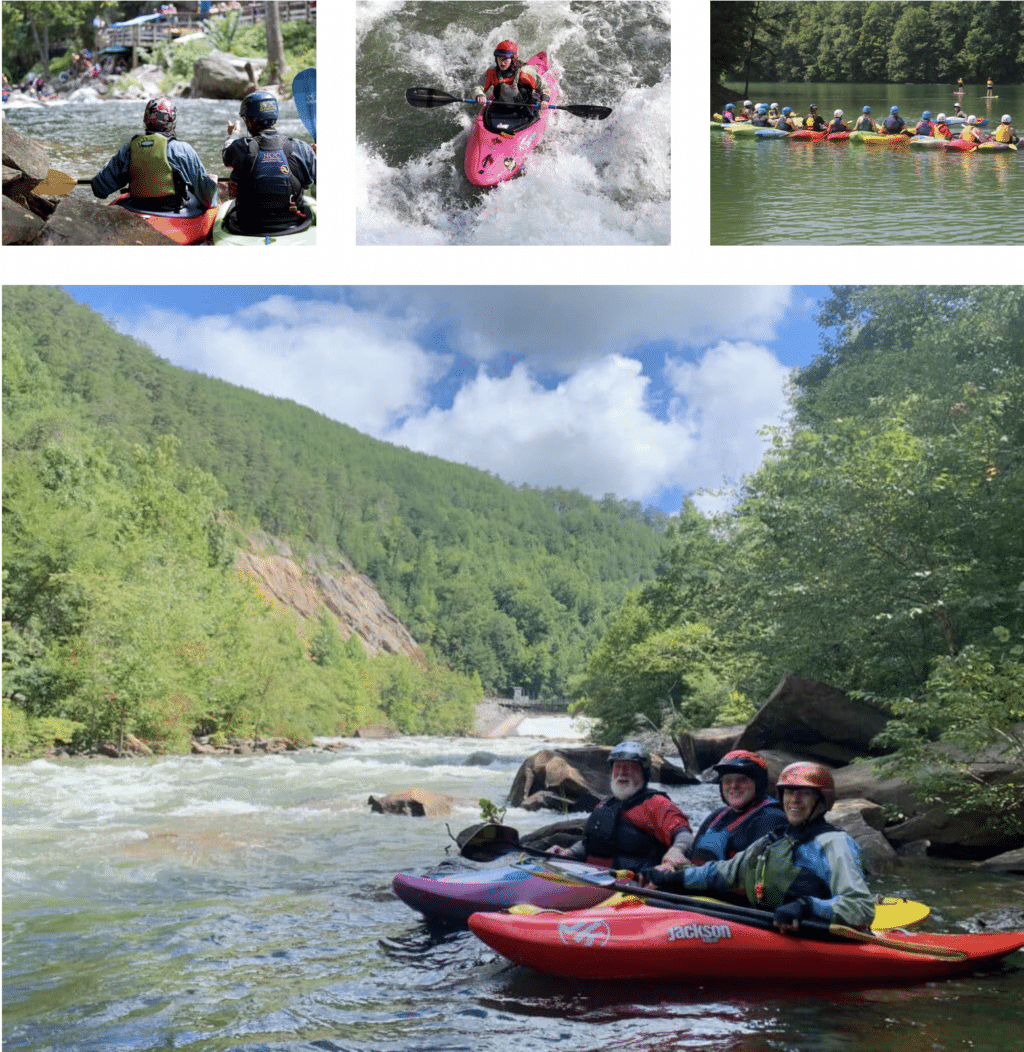
Another great option is to join a paddling clinic, take a class, or hire a private instructor. Paddling clinics are usually held in the spring or summer by various regional paddling organizations, including canoe clubs or kayak clubs. One example is the Carolina Canoe Club, based out of Raleigh, and you can search for something similar in your area. Another option is to sign up for a group introduction class or private lesson, which are typically offered by outdoor stores, like private shops and REIs, or river outfitters, like the Nantahala Outdoor Center where Tosh is an instructor.
At the NOC, Tosh offers a variety of intro to whitewater kayaking courses. The basic premise is you start on a lake, where you get a feel for the boat, and then you head to an easy section of class I-II river to ease into moving current, typically an easier section of class II water on the Nantahala River. The NOC has one-day, two-day, and four-day beginner classes that let a person progress at a rate they feel comfortable with.
Start with Rafting
I learned to paddle by attending a raft guide school. This requires some commitment, usually a few weekends or a week on the river. But guide school isn’t just for early twenties kids hellbent on a life of adventure. It’s certainly true that many of these youthful folks will apply to join a full-time guide crew. But people of any age can usually pay for a spot in a guide school, typically held by various commercial rafting companies, including the NOC and other companies in the Southeast. Nationwide, another option is OARS, which runs guide schools on rivers in Utah or California. You can go to guide school to learn the basics, and become a DIY rafter, or to become a weekend warrior guide while keeping your full-time job. Once you’re part of the rafting community, you’ll find fellow adventurers curious about all types of paddling: rafts, cats, oar rigs, kayaking, and paddleboarding. Which leads to the last option.
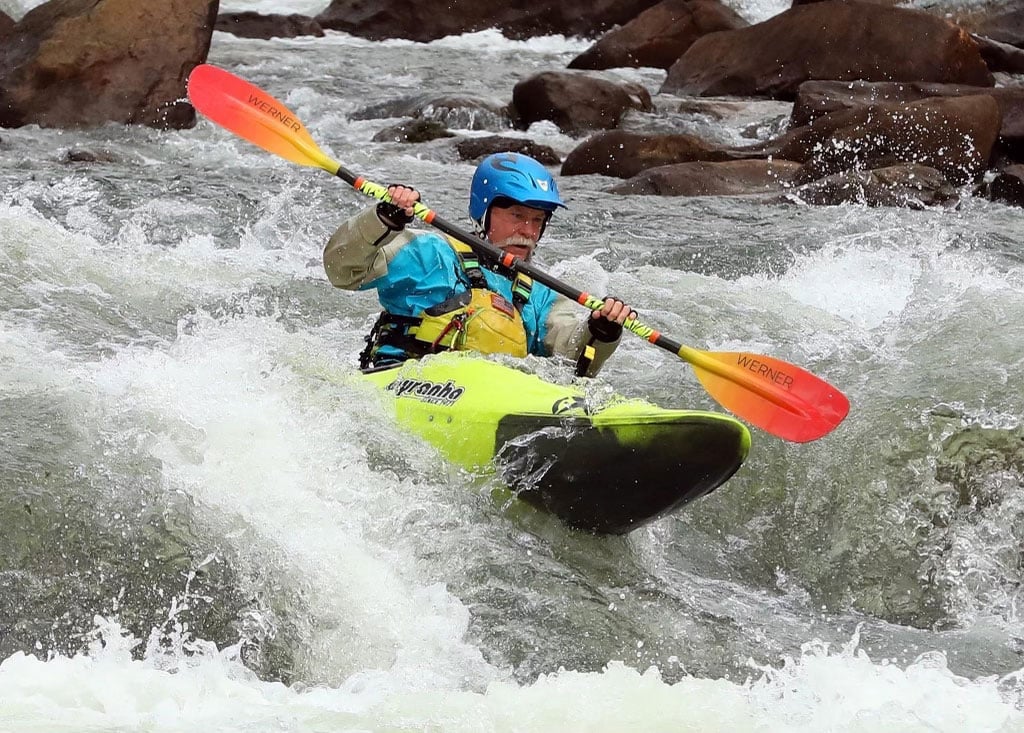
Some adventurous people teach themselves to paddle simply by buying a boat and going for it. That’s what many of us raft guides did; or as Tosh calls it, and I definitely agree, the school of hard knocks. When learning to kayak, I gained intimate knowledge about the texture and solidity of many rocks in the river. (I was also 20 years old at the time, and I might do it differently now.)
About boats: if your goals lean towards flatwater, such as lakes in fair weather or float streams, you could pick up a sit-on-top, inflatable, or touring kayak. If you want to paddle whitewater, you could borrow or rent a boat to start. Some paddling shops have demo programs, in which you pay a fee that lets you try a certain number of boats. Sometimes, a portion of that fee will apply to the purchase of a new boat when you’re ready to buy.
Selecting your first boat will be tough, and it depends on your goals. An affordable sit-on-top is typically better for lakes, fishing, and float streams with class I-II current. For beginner whitewater, like the Nantahala, you will need a ducky (an inflatable sit-on-top kayak) or a whitewater boat with full kit, including helmet, PFD, spray skirt, and more. Regarding hard shells, most people start with either a medium- to larger-volume river runner, which are more stable, or a lower- to medium-volume river play boat, which are more maneuverable but harder to keep upright. This is why trying out a few boats, whether borrowing, renting, or joining a class, is definitely the way to go.
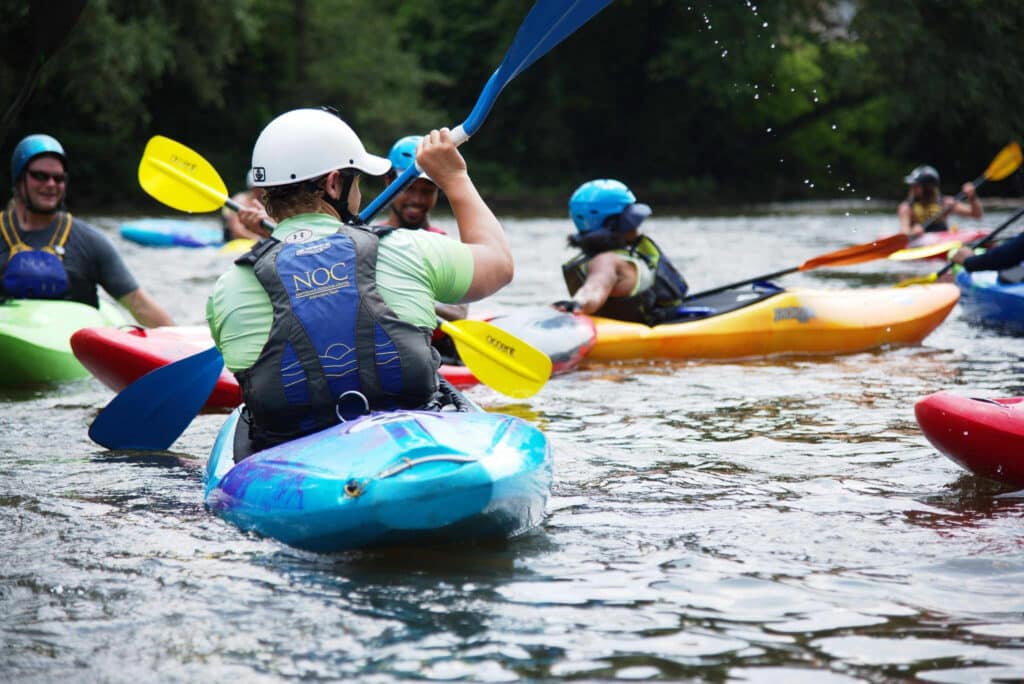
Several of my best paddling friends basically got started on their own, and I really admire their initiative. They found some flatwater, usually a lake or a float stream, and gave it a try. Most did this with a friend or two, then later sought an instructor to iron out the kinks. In the case of us raft guides, we met so many paddlers and made friends. Thus, we got tips from experts on the river. Being broke dirtbags, we also maybe sometimes lurked within earshot of a class and stole knowledge. Basically, our clinics happened while eddy hopping.
“One thing about proper instruction is it can help avoid bad habits,” said Tosh, emphasizing the importance of starting out by building a foundation of skills.
Figuring out where to become a paddler is tricky. There are so many paths you might follow, as long as they lead to water. Try to start small and don’t be afraid to progress slowly. For flatwater, look to short runs without major obstacles or hazards, i.e. no dams or construction debris. Or try a small lake—but remember that stiff winds can raise waves. When it comes to whitewater, both Tosh and I agree that the Nantahala River is one of the best places in the Southeast to start whitewater kayaking. You can even rent a raft or a ducky from the NOC and take it down yourself—still challenging, yes, but with a wider margin for error than a hardshell. After the Nanty, you could try the class II-III French Broad, the class III Pigeon River, or the class III+-IV Ocoee.
If I Become a Paddler, What Should I Expect?
Paddlers are an interesting bunch. We spend significant time doing the same things: left stroke, right stroke, left, right. Maybe an arm stretch here or there (recommended). We see some amazing sites, from wave pipes curving like glass to riverside waterfalls spraying mist to sweeping forests rising up the canyon walls into the sky.
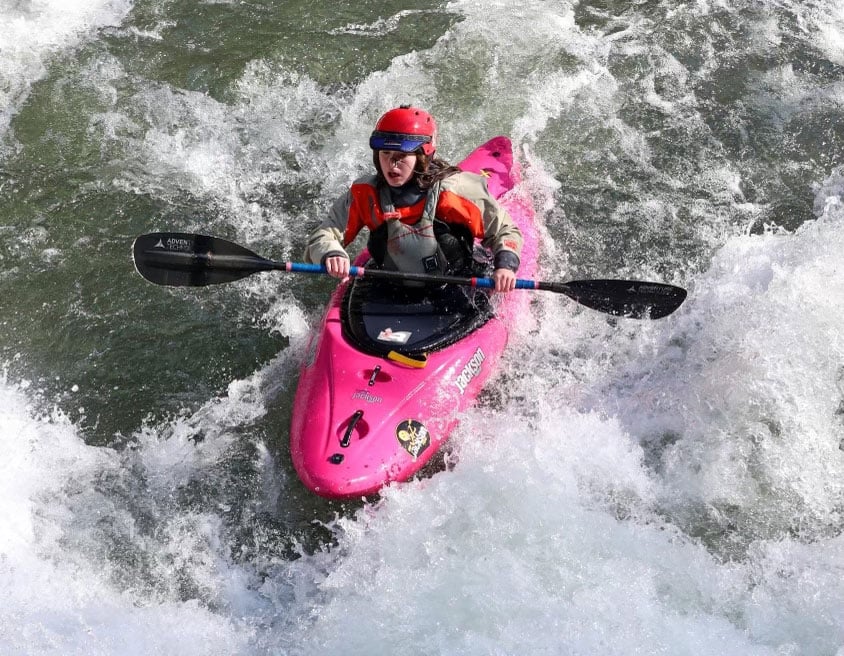
If the rule is true, about 10,000 hours of practice being the path to expertise, know that paddlers will spend 10,000 hours talking and thinking about paddling and 100,000 hours actually doing it. To become a paddler you have to put in the time. The more hours and days you commit to spending on the water, the better you will be, the more fun you will have, and the more you will paddle.
The paddling community is a dedicated bunch of outgoing people with a natural tendency toward camaraderie and a desire to spread this shared interest. Some of this attitude comes from the nature of paddling. Unlike other outdoor sports that involve explicit or implied competition, like bike or ski racing, paddling is typically a group sport with shared objectives: Progressing down the river together; assessing the lines through rapids; watching out for each other; hooting and fist pumping when everyone makes it safely to the bottom.
“The river is a dynamic environment,” said Tosh. “It can put you in state of vulnerability. Some people fear the unknown. And when you’re sharing that with individuals it creates a deeper bond.”
Mike Bezemek has paddled rivers all across the country, some of which he shares in his books Paddling the Ozarks, Paddling the John Wesley Powell Route, and Discovering the Outlaw Trail.
Cover Photo by Mike Bezemek
